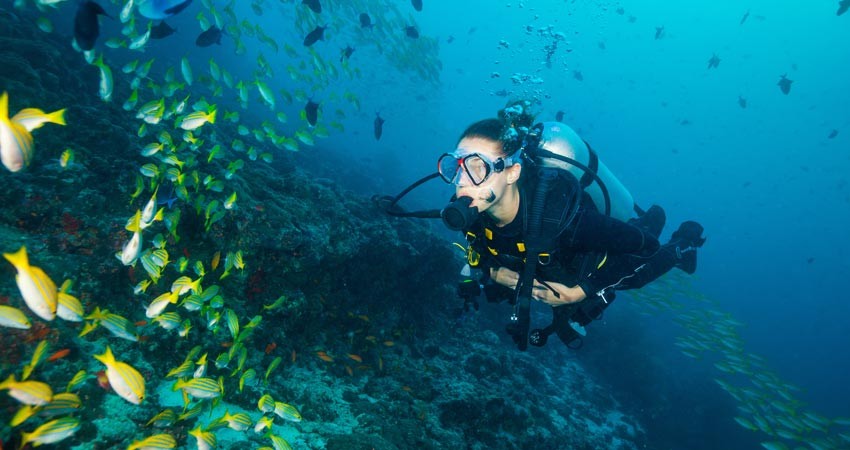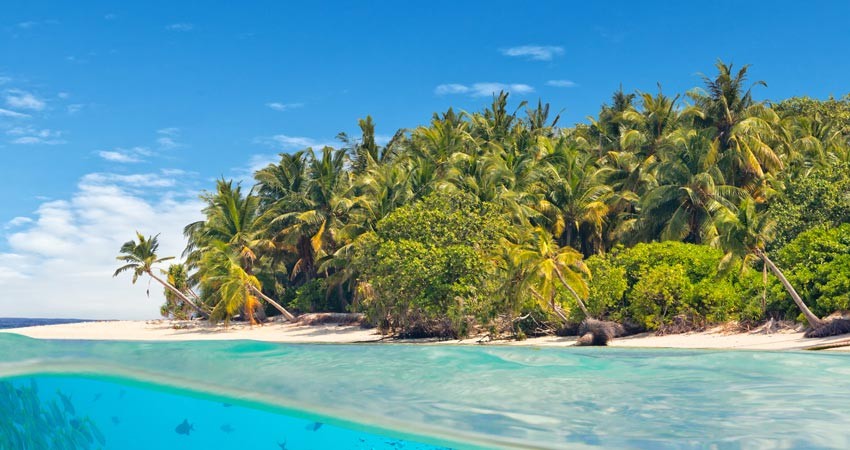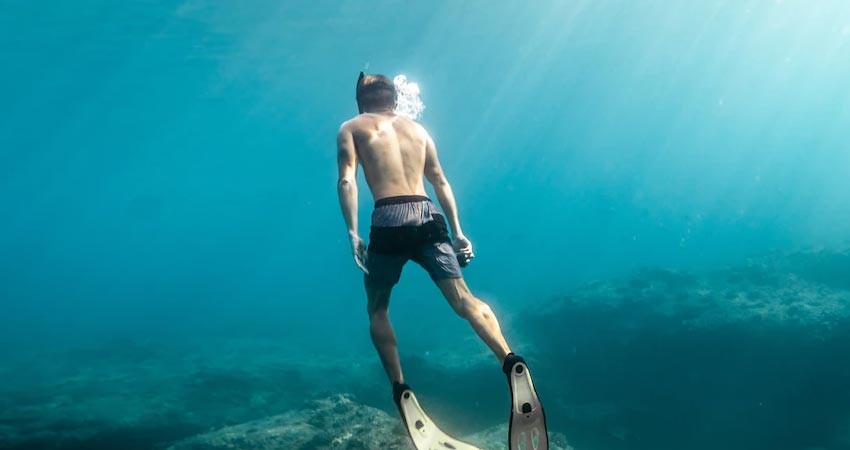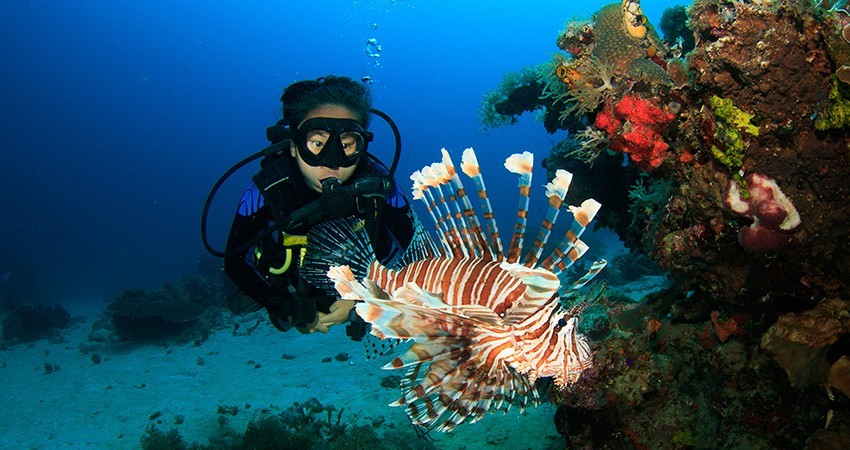Diving Sites in Port Blair











Activity Summary:
- Scuba Diving gears of best quality.
- Complete Scuba Equipments.
- Transport from any hotel at Havelock Island to Dive Site & Return utpo 3 kms
- Car transfers cost.
- 1 Ocean Dive after training of the skills by Professionals.
- Boat fees.
- Professional PADI Diving Instructor charges.
- Languages to communicate – English / Hindi.
- 30 mins skills training.
- 45 mins underwater dive.
- Depth : Max 12 meters.
- Free Pickup Drop Up to 3 Kms from Havelock Island Beach Resort
PADI Discover Scuba Diving Program
If you’re on Havelock Island and you’ve never done scuba diving, this boat dive under the PADI Discover Scuba Diving (DSD) program is where most people start. You don’t need to swim, don’t need to know anything about diving. Everything is explained and shown to you from scratch. A certified PADI instructor is with you the entire time—from the first safety briefing to the moment you’re back on the boat. It’s not a casual snorkelling session—it’s a proper guided dive, just made beginner-friendly.
You don’t have to come in prepared. You don’t have to train beforehand or study anything. You just show up. That’s the idea. It’s designed for people who’ve never tried scuba in their lives. Maybe you’ve seen videos or heard about it, maybe you’re nervous or just curious—this is the starting point. You’re not expected to know how to use the gear or even how to breathe through a regulator. That’s why this exists—to let you try diving without going through a full course.
How Will Boat Dive in Havelock Island Begin
You reach the dive spot, they get you into the gear—wetsuit, fins, mask, BCD, air tank, all that. It's already been checked before. Then there’s a short training bit, maybe half an hour. They do it either in a shallow part of the sea or sometimes in a pool. They show you how to breathe through the regulator, what to do if water gets in the mask, how to equalise so your ears don’t hurt, and the basic hand signs for underwater. If you don’t get something, no rush—they just go over it again till you’re fine.
They don’t push you. If you need ten minutes longer with breathing, you get it. If you’re not sure how to equalise your ears, they’ll show you again. Everything happens before you even get on the boat. And once you do, it’s relaxed. You’re not in some high-pressure environment. You’re just moving through steps.
The dive site depends on the conditions. But these are some common ones:
Red Pillar – very calm, ideal if you're anxious
Lighthouse – bright coral and schools of fish
Tribe Gate – has slightly deeper patches
Nemo Reef – packed with reef fish, soft coral everywhere
The instructor decides where to go based on the tide, visibility, and current. They’re not guessing—they’ve usually dived that morning or the evening before and already know which site will be best. Once you’re in the water, there’s no big splash or rush. You enter slowly. You float for a bit, breathe, signal that you’re okay, and descend together.
What Happens During the Dive
You drop into the water, and it gets quiet. You breathe through the regulator. It feels off for a bit, but you get the hang of it. The instructor stays right next to you. Always close, you go down slowly. You equalise as you go, so your ears don’t hurt. After a while, the gear stops bothering you. The tank doesn’t feel like much. You’re not swimming, you are just floating. You stay still unless the instructor tells you to move. You hang there, just above the reef or the sand. You watch whatever’s there—some fish, a bit of coral, maybe a crab or something. The instructor points things out now and then. You don’t do anything. Just watch. If you’re not okay, they slow down. Maybe bring you up a bit. They check your air often, you’re never alone.
Is This Boat Dive In Havelock Right for You?
If you’re in decent health and older than 10, you can do this. You don’t need to know how to swim. You don’t have to be fit or sporty. Doesn’t matter if you’ve never done anything in the ocean before. This is for people who’ve never even snorkelled. The main thing is—can you stay calm? Can you breathe through your mouth and follow instructions? If yes, you’re good. There’s a medical form you’ll have to fill out. If you’ve got asthma, heart conditions, sinus trouble, or have had surgery recently, they might not let you dive. It’s not a rejection, it’s just about safety.
Why Boat Diving Is Better Than Shore Diving in Havelock
With shore diving, you’re limited to sites near land. Those places are often overused, visibility is lower, and coral is sometimes damaged. With boat diving, you head further out where fewer people go. That means better reefs, healthier marine life, and clearer water.
It also changes the whole atmosphere. Shore diving feels more like an activity. Boat diving feels more like an escape. You’re out at sea, away from everything, and when you go under, there’s no background noise-no people splashing, no jet skis, no beach chaos. Just silence. The reef also reacts differently. Fish aren’t darting away every time you move. They’re just doing their thing. You see natural behaviour. That’s part of what makes it feel so different from other ocean activities.
Safety and Dive Conditions
Every dive depends on the sea and weather conditions. If visibility is poor or waves are high, the dive may be delayed or moved to another day. You’ll be informed ahead of time. Safety isn’t something extra—it’s standard. The instructors don’t gamble with conditions. If it’s not safe, the dive won’t happen. Gear is disinfected and checked before every use. Oxygen kits and emergency kits are on the boat. The boat crew is in radio contact with the dive base the entire time. You’ll be trained on what to do if your mask floods, how to signal “okay” or “not okay,” and what to do if you want to stop the dive. This isn’t some risky sport.
Things You Need to Know Before Booking
Most of the people are new to scuba diving and are confused about what to do or what not to do. Don't worry, here are some tips or facts you must know before diving.
- Swimming not required
- Minimum age: 10
- No diving for pregnant individuals
- People with asthma, recent surgeries, or serious health issues should not dive
- You must wait 12–18 hours before flying after a dive
- You have to fill out a medical form and sign a waiver
This is standard worldwide, not something unique to Havelock. Diving affects your body pressure and gases. So the post-dive no-fly rule is serious. Plan accordingly.
Best Season for Diving in Havelock
October to May is the main season when most people dive. The sea stays steady, the skies are clear, and the water looks better. That’s the dry season. After that, monsoon comes in—June to September. Waves get rough, water turns cloudy, and most shops stop diving for a while. It’s not the right time for it. Go in the morning if you can. Sunlight is stronger, the sea doesn’t move much, and the wind’s still low. That helps with visibility. Even then, it’s not always the same. Some days you’ll see everything. Some days it’s just average. That’s normal. The sea doesn’t stay the same all day—it keeps shifting.
What Stays With You After the Dive
The quiet underwater, the weird comfort of floating, the Colours of fish that don’t seem real—these are what you take home. You don’t realise it immediately, but diving changes how you see the ocean. It’s not a flat blue line on the horizon anymore. You’ve been inside it. Watched it shift. Seen coral up close. You feel more connected. You’ll remember how your breath sounded. How it felt to hang in the water without touching the ground. How the world looked down there. It will be quiet, and time will stop. Diving into the aquatic world will introduce you to the beautiful nature with different colors and living styles.
X
Enquire Now
X
Book Now
Diving Sites in Port Blair
Diving Sites in Havelock Island
Diving Sites in Neil Island